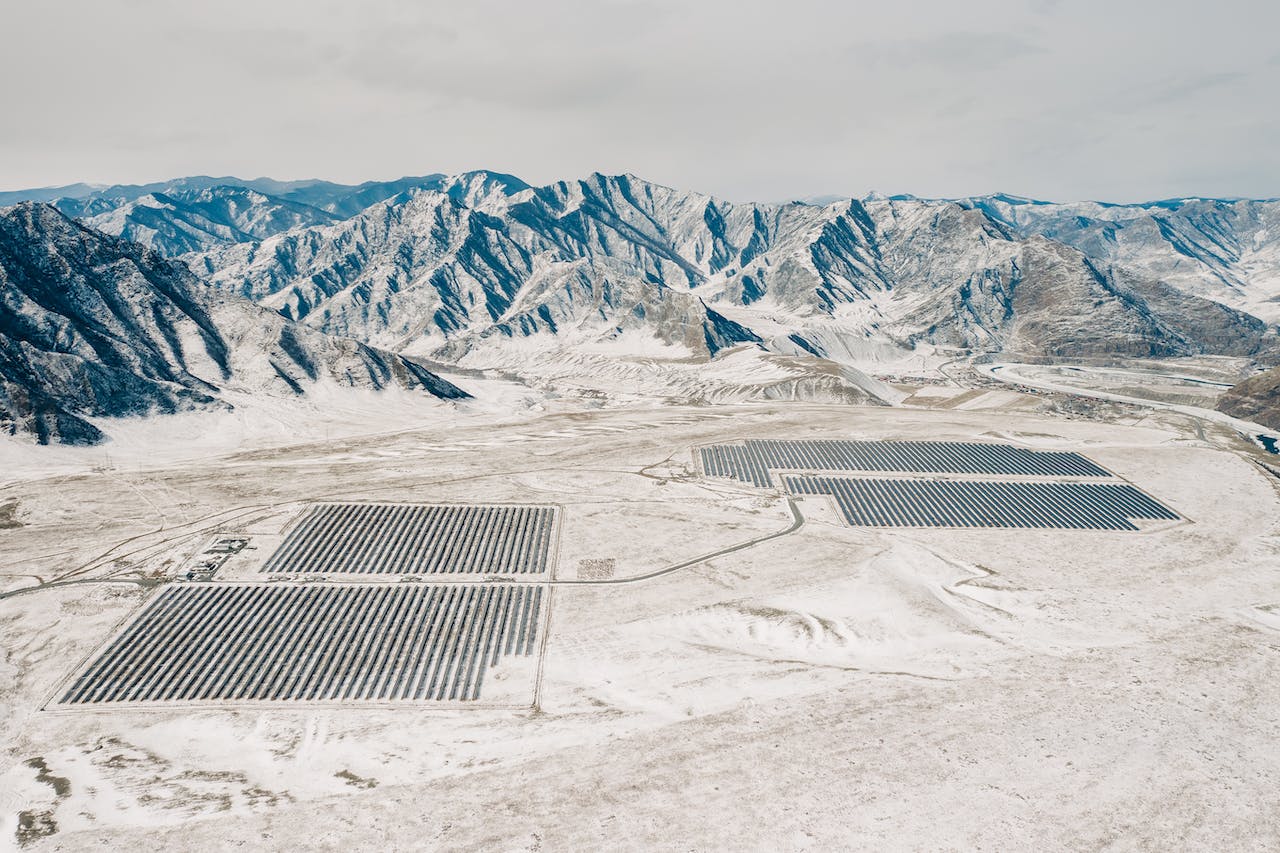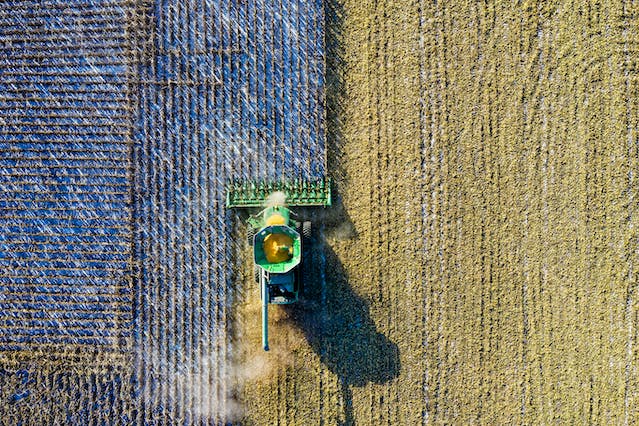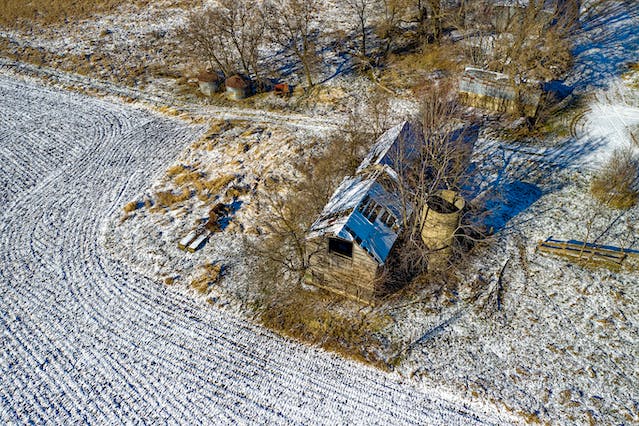Comments
- No comments found

Even with careful planning, an occasional cold front blows in unexpectedly and causes frost damage to a farmer’s crops.
The results can be catastrophic — if a freeze occurs during flowering, plants may not bear as much fruit, if they produce it at all. For people whose livelihood depends on crops, a cold snap can spell hard times ahead. How do farmers protect their plants against frost?

One of the most important ways farmers prevent frost damage on their crops is through careful planting site selection. In the Northern Hemisphere, for example, planting seeds in a south-facing field ensures the soil will trap more heat from the sun. This trapped heat helps plants keep warm throughout the night.
Additionally, planting on a slope allows cold air, which sinks, to flow past crops rather than settling on them. For the same reason, high-elevation orchards tend to experience less fruit and flower damage from cold than do low-elevation sites.
Soil moisture matters a great deal when trying to keep plants warm in the winter. The warmest type of ground consists of bare, moist, firm soil. The following soil conditions — listed from warmest to coolest — all tend to be colder than that:
Moist ground with shredded cover crops
Low-growing cover crops
Firm, dry ground
Fluffy, freshly disked ground
Tall cover crops or weeds
Thick cover crops that restrict air drainage
Dark-coloured, gravelly soil absorbs more solar radiation during the day than light-coloured soil, helping it store more heat. Heavy soils with lots of clay hold more warmth than sand. Overall, proper site selection is the best way to prevent frost damage during winter, because it’s free and requires no routine care.
Attached to the back of a tractor, a mobile propane heater — sometimes called a frost dragon or thermablaster — blows hot air across crops. This type of frost control machine can heat five or six acres of land and protect crops at temperatures as low as -5 degrees Celsius, the point at which fruit and flower damage starts to occur.
Compared to older models, modern propane-powered heaters are more fuel-efficient. Propane is relatively inexpensive and can be stored long-term without losing quality.
Another way to keep crops warm is to use a wind machine. Resembling a giant fan or turbine, a wind machine blows air, but it doesn’t emit any warmth of its own. Instead, it mixes the air from the upper portions of an inversion layer — a pocket of warm air at a higher altitude — with the cold, heavy air close to the ground.
A wind machine can draw warm air downward to raise the temperature around trees or crops by several degrees. However, farmers mainly use wind machines to maintain existing temperatures rather than to significantly warm a field up.
There are stationary wind machines meant for permanent installation in vineyards and orchards. Farmers can also use portable frost control machines attached to the backs of trucks or tractors to change their placement as needed.
Since wind machines are driven by motors, they consume fuel — typically diesel or propane. Unlike mobile propane heaters, however, wind machines only work when an inversion is present. Farmers sometimes combine them with heaters to help blow heat across an orchard.
One surprising way to prevent frost damage is to fly a helicopter over the field during an inversion. This technique works via the same mechanism as a wind machine — the spinning blades mix warm, higher-altitude air with the cold air sinking around the crops. Helicopters usually pass repeatedly over each section of the field to prevent the cold air from sinking again.
Of course, this method is more viable for huge growing operations rather than individual farmers. Flying a helicopter isn’t cheap!
Farmers are careful to choose and plant crops that will perform well in their growing zone during the winter season. Frost-hardy vegetables like kale, brussels sprouts, onions, collard greens and turnips are good choices for winter in the Northern Hemisphere. Not only will they survive the cold, but they can actually taste better when grown at lower temperatures.
As genetic engineering becomes more sophisticated, it’s also becoming possible to grow traditionally sun-loving plants, like corn, in cold climates. Farmers have more options than ever when it comes to choosing frost-resistant plants.
One of the simplest, most common ways to protect plants from frost is with non-woven polyester row covers. These covers trap the heat around plants to help them weather the cold.
Another option is to use drop cloths or blankets to keep plants cosy. In fact, any medium-weight fabric other than plastic can be a good cover. The reason farmers don’t use plastic is that it transmits cold air to plants and can make frost damage worse.
Whichever material they choose, farmers put the covers over their crops at night, draping them loosely over the plants to allow for better airflow. A wire frame prevents the covers from touching the plants themselves.
In the morning, they pull the covers off so the plants can get adequate sunlight. Using frost covers can be tedious, but it’s a fairly inexpensive method for protecting crops because it requires no fuel, electricity or specialised equipment.
When tall grass or weeds are present in a field, sunlight reflects off their surface. That means less heat is stored in the ground. Farmers who plant winter cover crops between orchard rows often mow them close to the ground to help warm the soil. Doing so increases daytime heat absorption and reduces the rate of heat loss at night.
Thermostats, thermometers and heaters make it easy to control the temperature inside a greenhouse. When the temperature drops below a set threshold, the heaters will kick in to protect the plants from frost damage.
Greenhouses can utilize baseboard heaters to warm plants from underneath. Farmers can also install greenhouse fan heaters that spread the warmth around more evenly, ensuring all plants are exposed to the same temperature.

Don’t let an unexpected late cold front ruin your growing season. You can take the proper precautions to keep plants warm throughout the chilliest months of the year.
Emily Newton is the Editor-in-Chief of Revolutionized. She is a science and technology journalist with over three years covering industry trends and research.
Leave your comments
Post comment as a guest